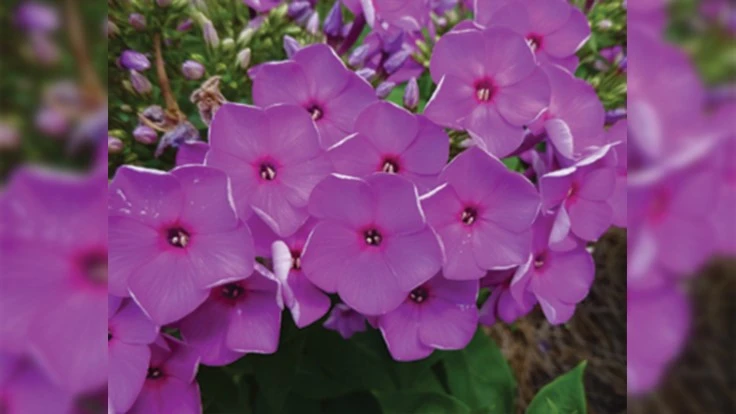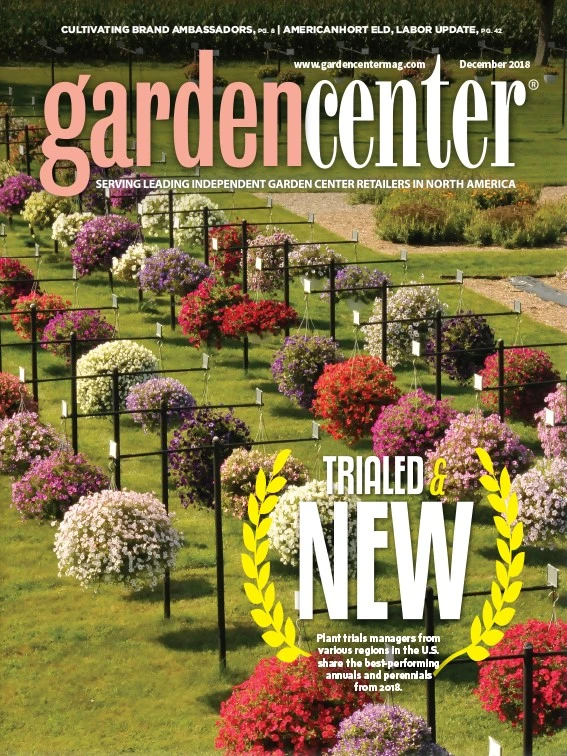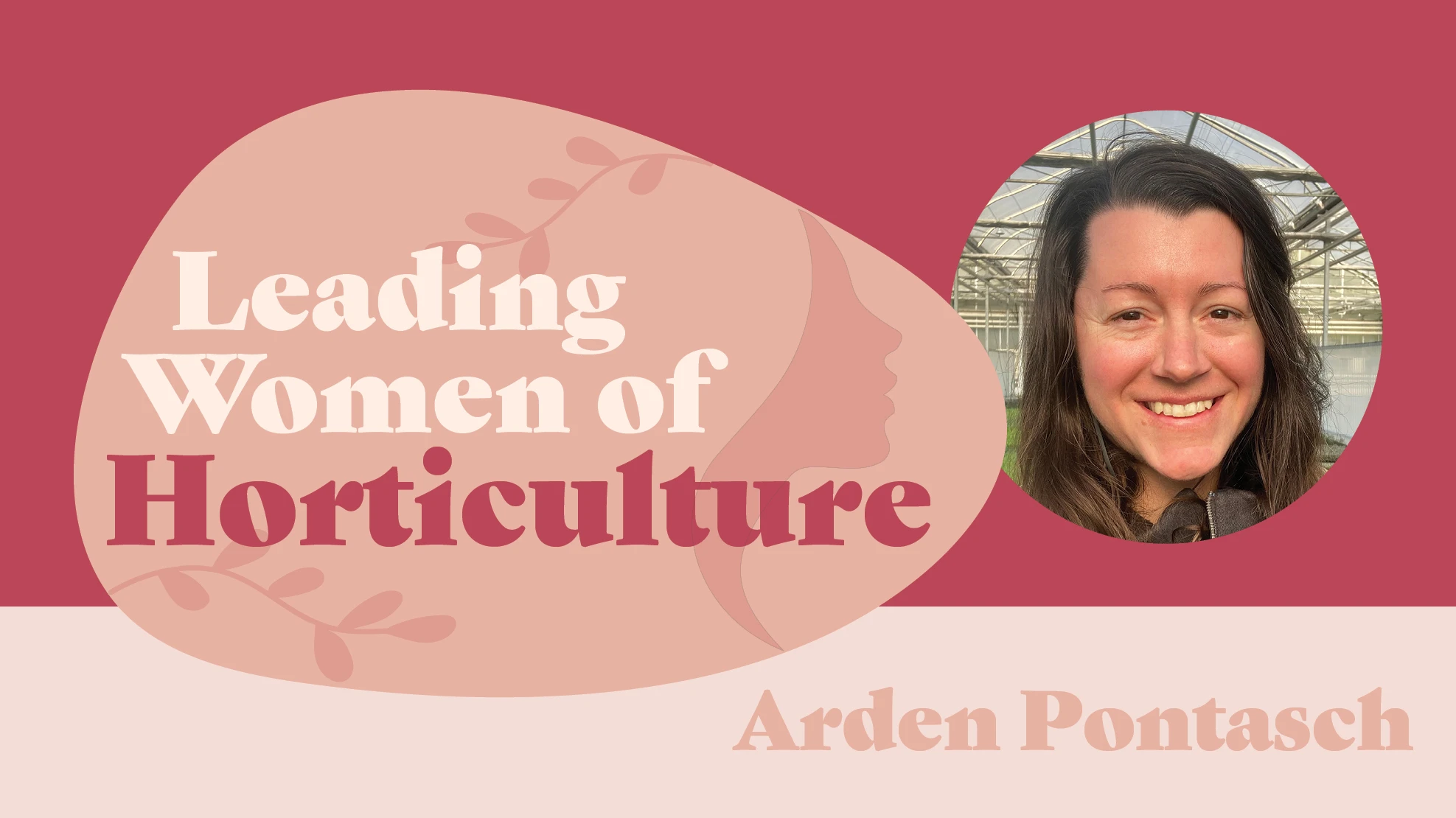
Photo courtesy of University of Georgia
by Chris Manning and Patrick Williams
BEST DROUGHT-TOLERANT ANNUAL
Portulaca Cupcake series (Dümmen Orange), North Carolina State University
Did well in our heat and humidity. Bright colored flowers cover the plant. Flowers are rays of sunshine! An easy, carefree, low-growing plant.

Ipomoea Sidekick Heart Bronze (Syngenta Flowers), Young’s Plant Farm
Ipomoea is an easy winner in the Southeast. Sidekick Heart Bronze is great because of the compact size, striking bronze foliage color and unique, heart-shaped leaf. The bronze foliage color held up well all summer long with no fading.

Euphorbia Crystal White (Green Fuse Botanicals), University of Georgia
Euphorbias have a bit of a leg up on other common garden plants due to their cacti relatives and tremendous ability to survive with very little water. Crystal White from Green Fuse Botanicals did more than just take dry conditions — it made it look easy. One super unique property of this long-bloomed plant was its low habit and more controlled urges to grow into other plants. Tight branching helped to make its wispy white flowers look more like a mat of color than a more typical long-stemmed euphorbia.

BEST DROUGHT-TOLERANT PERENNIAL
Gaillardia SpinTop series (Dümmen Orange) and Barbican Yellow Red Ring (Syngenta Flowers), North Carolina State University
Tough compact plants that are uniform in growth. Attractive flower patterns. Survives our heat!


Phlox Ka-Pow Purple (Darwin Perennials), University of Georgia
Our perennial phlox varieties found themselves in a dry bed this year, and I was very impressed with Phlox Ka-Pow Purple by Darwin Perennials. We started this plant by seed early in the year, and to see it grow into a beautiful blooming garden plant was very rewarding. The flowers were big and colorful, and it maintained a very long flowering period of about eight weeks. We will be anticipating a successful season for Ka-Pow Purple for its second season in-ground.

BEST POLLINATOR-FRIENDLY PERENNIAL
Agastache ‘Morello’ (Terra Nova Nurseries), North Carolina State University
Beautiful, rosy-pink-colored spikes cover the plant. Continuous bloomer. Performed well in our heat and humidity. Bees and other pollinators loved it!

Coreopsis Li’l Bang ‘Red Enchanted Eve’ (Dümmen Orange), University of Georgia
Coreopsis can be a tender perennial here in the South, but with good mulch and healthy plants going into the fall you can do it. Li’l Bang ‘Red Enchanted Eve’ by Dümmen Orange was a hot spot for bees and native pollinators in the garden this year. We had a large swatch of yellow and flowers that encouraged many insects to find these beautiful flowers throughout the day. These were also very responsive to a heavy deadheading mid-season which resulted in a second full flush of flowers to provide food for our pollinators.

BEST POLLINATOR-FRIENDLY ANNUAL
Lantana Havana series (Dümmen Orange), North Carolina State University
Well-branched, compact plants covered in flowers make it a favorite of the pollinators. Low maintenance, attractive flower colors, and the fact that it is easy to grow make it a gardener’s favorite!

Salvia ‘Rockin’ Deep Purple’ (Proven Winners), University of Georgia
An appropriate name for Salvia ‘Rockin’ Deep Purple’ by Proven Winners could have also been ‘Buzz Buzz Buzz.’ From sunup to sundown, this plant was covered with bees, butterflies and other native pollinators. Although salvias are traditionally known for their pollinator-friendly properties, this selection was at the top of the list. And it helped that this test plot of plantings got big and tall, being one of the heaviest bloomers of our salvias this year, which just helped it have such a huge potential for attracting a crowd.

Salvia Skyscraper Dark Purple (Selecta One), Young’s Plant Farm
Salvia Skyscraper Dark Purple was covered with flowers all summer long. With heat and humidity this Salvia just got bigger and better. Bees, butterflies and hummingbirds all frequently visited this Salvia in our garden.

BEST HEAT-TOLERANT ANNUAL
Pentas Lucky Star series (PanAmerican Seed), North Carolina State University
Nonstop flowering. Bright flower color on compact plants. No deadheading necessary! Plants always look tidy. Thrived in our heat.

Gomphrena ‘Truffula Pink’ (Proven Winners), University of Georgia
Gomphrena ‘Truffula Pink’ from Proven Winners has no problems handling the heat and most likely uses our hot Georgia environment to its advantage. We all loved the smaller growth habit of this selection, not getting more than 3 feet high — which is saying a lot for Gomphrenas. But even with a smaller habit it lacked none in bloom production and gave us all constant blooms all summer long despite the heat.

Confetti Garden Cupcake Smarty Party combination (Dümmen Orange), Young’s Plant Farm
This is a bright, colorful combination created from Portulaca Cupcake Upright Lavender, Orange and Lemon. It continued to flower all summer long and thrived in the heat and humidity.

BEST HEAT-TOLERANT PERENNIAL
Coreopsis Li’l Bang series (Dümmen Orange), North Carolina State University
Uniform, compact plants are easy to grow. Continuous bloomer — many different flower patterns.

Leucanthemum ‘Sweet Daisy Birdy’ (Dümmen Orange), University of Georgia
Leucanthemum is not typically a plant you find for Georgia as a heat-tolerant plant, but I’m just as surprised to be picking ‘Sweet Daisy Birdy’ by Dümmen Orange to be a super heat-tolerant plant. This selection broke all my expectations this year and by far was the superior daisy to be grown in the garden, with a large part of that being credited to the fact that it’s been in bloom for 15 weeks! We have kept it watered, but this is no easy task for a Leucanthemum in the South, which is relentlessly hot from June until October.

BEST OVERALL PERFORMANCE: ANNUAL
Begonia Canary Wings (Ball Ingenuity), North Carolina State University
Wow, what a winner! The chartreuse colored foliage will blow your socks off! Got a shady spot, this plant will illuminate it. The bright red flowers are a bonus. Continued to impress all season long.

Solenostemon ColorBlaze Torchlight (Proven Winners), University of Georgia
We loved this Coleus from Proven Winners from the beginning of the season to the end of our growing season; it did nothing but get better and better. ColorBlaze Torchlight was a powerhouse of color this year in the Coleus category due to its vibrant green leaves with red and hot pink veins. The strong stems put forth leaves with serrated margins each with hints of pink and red that helped the plant stand out from solid-leaf varieties. Torchlight remained lush throughout the entire growing season, and despite our occasional trimming, new growth came back with vigor every time.

Caladium Water’s Edge (Classic Caladiums), Young’s Plant Farm
Water’s Edge is a stunning white and green Caladium. It is a large, fancy-leafed variety. The white is very clean and bright, which provides a nice contrast to the green edge. This Caladium will look awesome in the landscape.

BEST OVERALL PERFORMANCE: PERENNIAL
Echinacea ‘Kismet Raspberry’ (Terra Nova Nurseries), North Carolina State University
The raspberry flower color is striking. Petals radiate out straight (flat) from the center. Continuous flowering on sturdy upright stems — good for cuts or leave the seed heads for the birds. Mass plantings of ‘Kismet Raspberry’ are breathtaking.

Echinacea Sombrero Tres Amigos (Darwin Perennials), University of Georgia
Echinacea can be hit or miss for the South, but Sombrero Tres Amigos was a solid hit from Darwin Perennials. A super long bloom time was a huge high point for the plant, which bloomed for more than 6 weeks straight. The color transition from peachy-coral to rose and finish with a hint of burgundy seemed to extend the overall interest of the plant. If in need of a full sun plant that performs well in drier soil conditions, Sombrero Tres Amigos is a great selection for any garden.

Read results from other regions:

Explore the December 2018 Issue
Check out more from this issue and find your next story to read.
Latest from Garden Center
- Meet the Next Gen: Gabriella Blair, Star Roses and Plants
- Leading Women of Horticulture: Katie Dubow, Garden Media Group, and Aubry Field, Lizzy Blossom
- Boxed in: 2025 Axiom Gardening Outlook Study explores big box vs IGCs
- Rhododendron renaissance: Holden Forests & Gardens using research to improve commercial plants
- Showing up at your horticulture business as your whole self
- Ask HR: We got a bad review after an employee having a bad day snapped at a customer. What do I do?
- University of Florida researchers are securing the future of floral fragrance using caladium
- Leading women of Greenhouse Management





